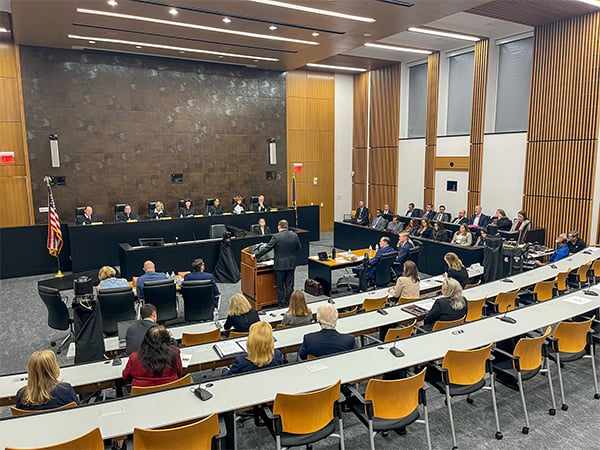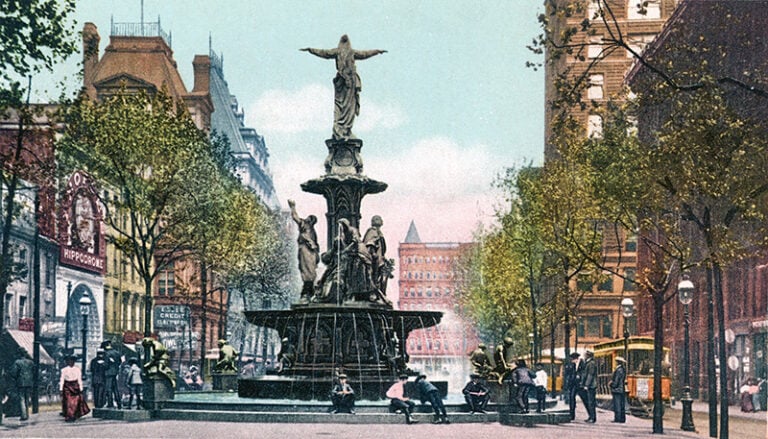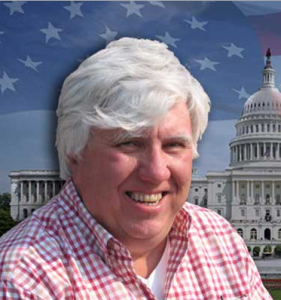WASHINGTON – In case you haven’t noticed, America is falling apart – literally.
The American Society of Civil Engineers, in its most recent study, concluded that an investment of $3.6 trillion is urgently needed by 2020 to bring the nation’s infrastructure — roads, bridges, dams, sewer systems and what have you — up to snuff before the entire system crumbles like a sand castle in the tide.
That’s a tall order and with Congress being what it is at this point in time it’s hard to see the necessary job of addressing the country’s ongoing transportation needs getting done, ultimately creating a dangerous situation for both kith and kin.
A perfect example of the ongoing problem can be found in Northern Kentucky where the Brent Spence Bridge, which carries I-71 and I-75 over the Ohio River between Covington and Cincinnati, is quickly becoming as obsolete as a manual typewriter. The cantilevered, double-deck structure, which opened in 1963, was designed to carry 85,000 vehicles a day. Estimates now place traffic at more than 200,000 cars and trucks every 24 hours.

Just in case you thought London Bridge was the only one falling down, chunks of concrete from the upper deck of the span plummeted to the lower deck in June 2011, leading commuters and local leaders to conclude that the good, old Brent Spence Bridge ain’t what she used to be and it might be better swim across the muddy Ohio than drive to work.
The National Bridge Inventory has concluded that the bridge is functionally obsolete. As a result of the traffic flow – which the Brent Spence was not built to handle – congestion results in an average of 3.6 million hours of delay per year.
Obviously the bridge on one of the nation’s busiest north-south routes has to be replaced and authorities have been mulling its demise – for 13 years. No agreement appears in reach.
Now the average commuter might wonder about the delay, given the safety factors involved. The price tag is expected to run about to about $2.6 billion, a pretty penny indeed, but a necessary investment.
And it’s not like Kentucky doesn’t have friends in Washington. Senate Republican Leader Mitch McConnell, of Louisville, now controls a majority in the upper chamber. House Speaker John Boehner, also a Republican, is a Cincinnati native who represents a district that extends to the city’s northern suburbs. And Rep. Hal Rogers, from Somerset, is the chairman of the House Appropriations Committee, a panel that maintains significant influence on governmental spending.
Thus far, none of them, perhaps the three most powerful figures in Congress, have been able to secure the funds necessary to fund a new bridge that is clearly needed.
Some leadership. What good is having the most influential lawmakers in the country if they can’t get the money to build a simple bridge, which, as the evidence shows, is far from being a pork-barrel project?
Now, in defense of McConnell, Boehner and Rogers, it is not all their fault. Members of Congress have effectively banned the use of earmarks, those budget provisions that mandate funds be directed to a specific project, since 2011. That, frankly, was a mistake, and a direct cause of the gridlock that has kept the nation’s capital in knots for the past four years.
Banning earmarks, which were never a major portion of the budget, essentially ended the sort of horse trading that kept the wheels turning in Washington for decades. Leadership often in the past could attract the support of various pieces of legislation from members in return for an earmark. That option no longer is viable, leaving party leaders unable to strike the deals necessary to keep the government operating smoothly – or at least as smoothly as government normally operates.
Even worthy projects like the replacement of the Brent Spence Bridge cannot now get direct funding, resulting in a potentially dangerous situation. The hands of McConnell, Boehner and Rogers are all tied, unable to strike any deals that support the funding.
So they are looking for alternatives. McConnell, as is his wont, is looking to pay for the project on the backs of the very workers who will be called on to build the bridge. McConnell, who traditionally treats workers like pawns in a kid’s chess game, wants to authorize funding for interstate bridge projects like the Brent Spence by repealing the Davis-Bacon Act — which establishes guidelines for worker salaries on federal government-contracted public works projects.
Davis Bacon assures workers will receive a certain level of compensation as part of the bids submitted by contractors, thus increasing the cost of the project. McConnell said the move would free up $13 billion. Of course it comes at a time when middle class salaries, like those afforded workers on bridge projects, are already lagging behind, rendering it even more difficult for them to pay their bills. Don’t count on it happening.
Boehner wants to make the new Brent Spence a toll bridge, unsurprising since much of the traffic originates in Northern Kentucky as commuters drive to and from Cincinnati for work. Obviously tolls attract little support from local residents and community leaders who will wind up footing the bill. Surprisingly, Gov. Steve Beshear has come down on the side of tolls, which doesn’t place him in particularly good stead with the good folks of Northern Kentucky.
And there are other ideas. Sen. Rand Paul, a Republican from Bowling Green, and Rep. Tom Massie, a Republican from Lewis County, for instance, want to establish a national priority list for road projects that would include ventures like the Brent Spence Bridge replacement and make them eligible for federal grants. That idea contains no assurance that the span will be in line for any money whatsoever.
There is one plan making the rounds that makes sense but already has been rejected by McConnell and Boehner – raise the federal gas tax.
Sen. Bob Corker, R-Tennessee, and Sen. Chris Murphy, D-Connecticut, have proposed raising the levy by 12 cents over two years and indexing it to inflation while lowering some other taxes, thus raising billions of dollars for the federal Highway Trust Fund, which pays for the nation’s road and bridge work and currently faces a $160 billion deficit over the next 10 years.
The 18.4-cent-per-gallon gas tax hasn’t been raised since 1993. Revenues have dropped as a result of consumers turning to more fuel efficient cars, meaning drivers are buying fewer gallons of gas and, in turn, contributing fewer dollars to the trust fund.
Regardless, funding for the Highway Trust Fund is set to expire in May while Congress continues to diddle. Meanwhile drivers are forced to continue to use an inadequate bridge across the Ohio.
Remember, the Brent Spence Bridge is only one of hundreds deemed obsolete across the country. At the same time water and sewer pipes are cracking, roads are crumbling and levees are breaking. It’s a national problem, a looming catastrophe, really. So where’s Congress?
NKyTribune Washington correspondent Bill Straub served 11 years as the Frankfort Bureau chief for The Kentucky Post. He also is the former White House/political correspondent for Scripps Howard News Service. He currently resides in Silver Spring, Maryland, and writes frequently about the federal government and politics. Email him at williamgstraub@gmail.com.




















I never see any adequate discussion/analysis of eliminating the semi traffic (which is the major culprit) on the bridge by rerouting it to 275. Maybe that won’t work, but I’d like to see the analysis.